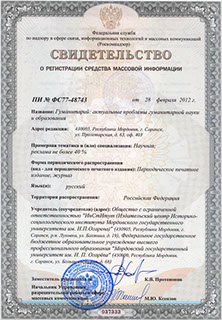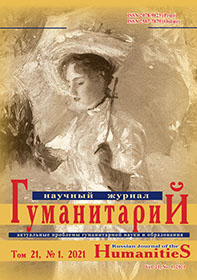ГуманитариЙ актуальные проблемы гуманитарной науки и образования
Russian Journal of the Humanities
ISSN 2078-9823 (Print)
ISSN 2587-7879 (Online)
Navigation
ISSN 2078-9823 (Print), ISSN 2587-7879 (Online)
DOI: 10.15507/2078-9823.053.021.202101.009-018
УДК 94(100)
Aleksandr O. Naumov
Lomonosov Moscow State University (Moscow, Russia)
e-mail: naumov@spa.msu.ru
On the Causes of the “Tulip Revolution” in Kyrgyzstan: the Role of the External Factor
Introduction. “Colour revolutions”, which are coups using technologies, mechanisms and tools of soft power, became a notable phenomenon in the post-Soviet space at the beginning of the XXI century. Attempts to dismantle political regimes in the region using methods of non-violent struggle are still being made by Western experts in geopolitical engineering, and directly at the borders of the Russian Federation. The article examines the role of an external factor in the preparation and implementation of one of the “color revolutions” of the first wave – the “Tulip revolution” in the Republic of Kyrgyzstan. Materials and Methods. The methodological basis of the research is the system, structural-functional, comparative-political approaches, methods of analysis, synthesis, induction, deduction and observation. Results and Discussion. The article presents an analysis of the causes of the socio-political crisis in Kyrgyzstan that led to the “Tulip revolution” in 2005. Special emphasis is placed on studying the activities of the United States to form a Pro-Western civil society in the country by promoting various projects and programs of democratization. With the help of Western soft power actors operating in Kyrgyzstan since the 1990s, local non-governmental organizations and mass media were organized, and cadres opposed to the Akayev regime were trained in various spheres of social and political life. Conclusions. Even in the specific conditions of Central Asia, Washington managed to create a “revolutionary” infrastructure on the ground, helping anti-government forces in areas where they were not competent enough. The author concludes that without financial and organizational support, the Kyrgyz opposition would not have been able to implement the successful scenario of the “colour revolution”. The victory of the “Tulip revolution” did not bring the prosperity promised by its leaders to the people; on the contrary, it was this event that caused huge damage to the country’s public administration system and triggered a series of crises that still haunt Kyrgyzstan.
Keywords: “colour revolutions”, soft power, Kyrgyzstan, coup d’etat, “Tulip revolution”, A. Akaev, K. Bakiev, R. Otunbayeva, USA, democratization, non-governmental organizations, mass media.
For citation: Naumov A. O. On the causes of the “Tulip Revolution” in Kyrgyzstan: the role of the external factor. Gumanitarian : aktual’nye problemy gumanitarnoi nauki i obrazovaniia = Russian Journal of the Humanities. 2021; 21(1): 9–18 (In Russ.). DOI: 10.15507/2078-9823.053.021.202101.009–018.
Acknowledgements: The research was carried out with the support of the Interdisciplinary Scientific and Educational School of the Moscow University “Preservation of the world cultural and historical heritage¨.

© Ogarev Mordovia State University. History and Sociology Institute, 2017
68, Of. 411, Bolshevistskaya St., 430005, The editorial office of the scholarly journal «Russian Journal of the Humanities»
Tel.: (8342) 24-25-90; 27-07-11, Fax: (8342) 24-25-90, E-mail: jurnal-econom-hist@isi.mrsu.ru
Designed by A. Napalkov, Email: napalkov@isi.mrsu.ru

